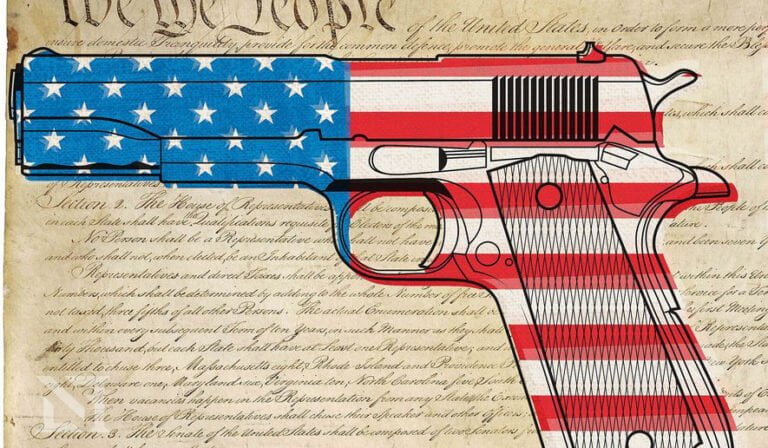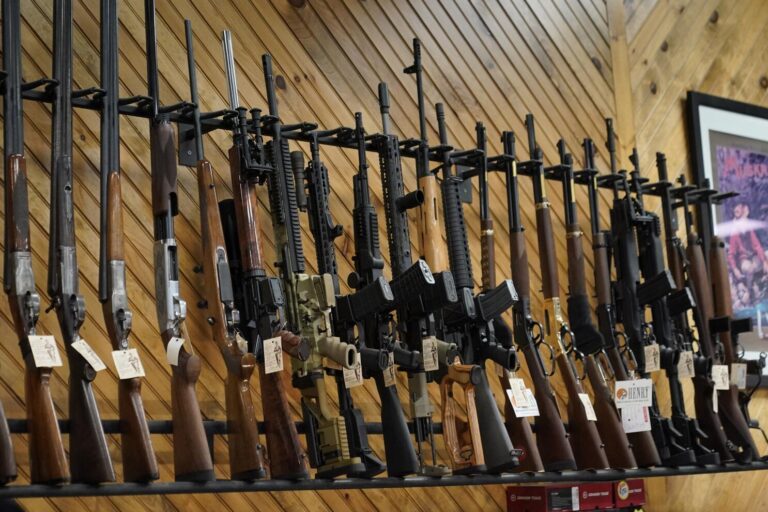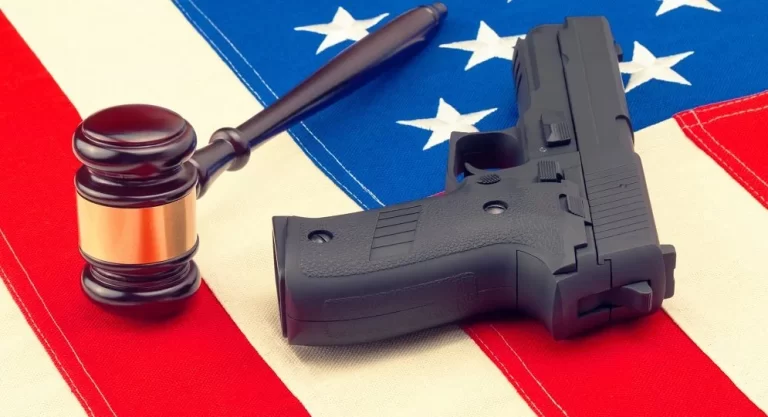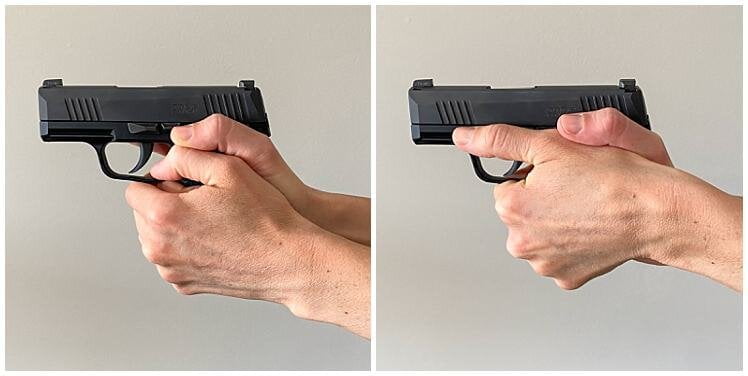National Firearms Act: A Historical Overview
The National Firearms Act, 73rd Congress, Sess. 2, ch. 757, 48 Stat. 1236 was enacted on June 26, 1934, and is currently codified and amended as I.R.C. ch. 53.
Originally published : 1934
Effective : July 26, 1934
Enacted by : the 73rd United States Congress
Public law : Pub. L. 73–474
Titles amended : 26 U.S.C.: Internal Revenue Code
U.S.C. sections created : I.R.C. ch. 53 § 5801 et seq
In the world of firearms regulation, the National Firearms Act (NFA) stands as a milestone in American legislative history. Enacted in 1934, the NFA was a response to the turbulent times of its era, intending to address the rising concerns surrounding firearms, their use in criminal activities, and, interestingly, revenue collection. This article delves into the history, evolution, and significance of the National Firearms Act, shedding light on how it has shaped the regulation of firearms in the United States.
The Birth of NFA
A Taxing Approach
The NFA, originally enacted in 1934, was introduced as a tax measure. It imposed a tax on the making and transfer of specific firearms as defined by the Act. Additionally, it levied a special occupational tax on individuals and entities involved in the importation, manufacturing, and dealing of NFA firearms. This taxation approach was an innovative way to regulate firearms while generating revenue for the government.
Registration Requirement
One of the key provisions of the NFA was the mandatory registration of all NFA firearms with the Secretary of the Treasury. These firearms encompassed shotguns and rifles with barrels less than 18 inches in length, certain firearms categorized as “any other weapons,” machine guns, and firearm mufflers and silencers. This registration requirement aimed to create a comprehensive database of NFA firearms in circulation.
The Underlying Purpose
Crime Control
Beyond its revenue-generating objectives, the NFA had a more profound motive: controlling the use of NFA firearms in criminal activities. Congress was deeply concerned about the prevalent use of these firearms in crimes, especially during the gangland era typified by events like the St. Valentine’s Day Massacre. To deter or even eliminate transactions involving NFA firearms, Congress imposed substantial $200 making and transfer taxes, a figure that has remained unchanged since 1934.
Self-Incrimination Challenge
The NFA, as structured in 1934, had an unintended consequence. It compelled individuals in possession of unregistered NFA firearms to register them with the Secretary of the Treasury. However, if an individual attempted to register such a firearm, the Treasury Department could share this information with state authorities, potentially leading to state-level prosecution. This situation created a legal dilemma, and in 1968, the Supreme Court ruled in the Haynes case that this registration requirement violated the Fifth Amendment’s privilege against self-incrimination. This ruling severely undermined the enforceability of the 1934 Act.
Evolution of the NFA: Title II of the Gun Control Act (GCA) of 1968
Remedying Constitutional Flaws
In response to the Haynes case, Title II of the Gun Control Act (GCA) of 1968 was introduced. This amendment aimed to rectify the constitutional issues outlined in Haynes. It had two significant provisions:
- Removal of Registration Requirement: The amended law eliminated the requirement for possessors of unregistered firearms to register them. Importantly, it provided no mechanism for individuals to register NFA firearms already in their possession.
- Protection of Self-Incrimination Rights: A provision was added to prevent the use of any information from an NFA application or registration as evidence in a criminal proceeding related to a violation of law that occurred before or concurrently with the filing of the application or registration. This safeguarded the Fifth Amendment rights of firearm possessors.
The Supreme Court’s 1971 ruling in the Freed case confirmed that these 1968 amendments had effectively addressed the constitutional issues of the original NFA.
Further Amendments: Firearm Owners’ Protection Act
In 1986, the Firearm Owners’ Protection Act made additional changes to the NFA. Notably, it expanded the definition of “silencer” to include combinations of parts intended for use in their assembly and fabrication. This amendment aimed to close potential loopholes in the regulation of silencers.
The Act also placed Gun Restrictions on the transfer and possession of machine guns, with exceptions for government agencies and those who lawfully possessed machine guns before May 19, 1986.
Conclusion
The National Firearms Act, born in 1934 as a tax measure, has undergone significant evolution over the years. While its primary aim was revenue collection, it also had the noble goal of curbing the use of NFA firearms in criminal activities. Through subsequent amendments and court rulings, the Act has adapted to address constitutional concerns, ultimately shaping the landscape of firearm regulation in the United States.
FAQs;
Q1. What is the National Firearms Act (NFA)?
The NFA is a piece of legislation enacted in 1934 that initially imposed taxes on certain firearms and required their registration. It has since evolved to regulate firearms more comprehensively.
Q2. Why was the NFA originally enacted?
The NFA was enacted to address concerns about the use of certain firearms in criminal activities and to generate revenue through taxes.
Q3. What was the significance of the Haynes case in 1968?
The Haynes case ruled that the NFA’s registration requirement violated the Fifth Amendment’s privilege against self-incrimination, making the 1934 Act largely unenforceable.
Q4. How did Title II of the Gun Control Act (GCA) of 1968 impact the NFA?
Title II of the GCA in 1968 removed the registration requirement for possessors of unregistered firearms and protected their self-incrimination rights.
Q5. What changes did the Firearm Owners’ Protection Act bring to the NFA in 1986?
The Firearm Owners’ Protection Act expanded the definition of “silencer” and placed restrictions on the transfer and possession of machine guns, with some exceptions.
Q6. What was the purpose of the NFA?
The purpose of the NFA was to curtail access to weapons favored by prohibition-era gangs like machine guns and short-barreled rifles. It imposed taxes and registration requirements on covered firearms.
Q7. Who are NFA members?
The NFA does not have “members” per se. It refers to a piece of federal legislation. The Bureau of Alcohol, Tobacco, Firearms and Explosives (ATF) administers and enforces the provisions of the NFA.
Q8. Who invented the NFA?
The NFA legislation was drafted and passed by the United States Congress in 1934 under President Franklin D. Roosevelt. It was introduced in the wake of prohibition-era violence and gang activity to restrict access to heavy weaponry.








